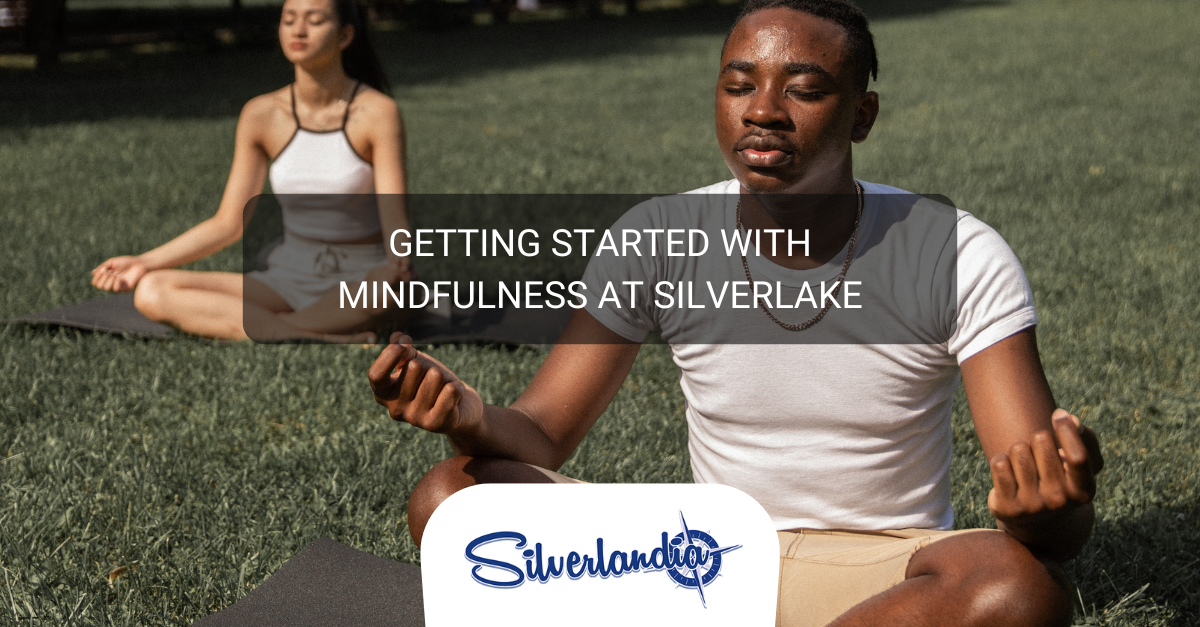Meditation appears to provide us with the perfect solution, delivering both reduced anxiety and enhanced self-regulation. However, you’re not alone if the thought of sitting quietly with nothing but your thoughts for the company makes you want to run screaming for the hills. You might think it’s impossible to silence your mind, and let’s face it—who has the time to do nothing? However, we’ve looked into this rising trend, and it appears that meditation is not some strange gimmick but rather a genuine means by which one’s life can be improved. Get started on meditation at Silver Lake today!
What’s Mindfulness About?
Mindfulness meditation, which offers a nonreligious spin on the age-old practice of reflection at the heart of religions like Buddhism, is what we’ll be focusing on here. Jon Kabat-Zinn, an influential meditation teacher from the United States, came up with the word “mindfulness” to describe the awareness that comes from “paying attention” on purpose, in the present moment, and without judging.
Plus, the advantages go far beyond a merely tranquil state of mind. Mindfulness also helps you to understand your own thought process and deal with day-to-day difficulties. Although we can’t always control the challenges life presents us with, we can alter our responses to them through the practice of mindfulness.
It All Starts With Breathing.
Begin by taking a seat in an upright position, feet flat on the floor, hands in the lap or on the stomach. To relax, begin taking long, deep breaths, letting your belly expand with each inhale and contract with each exhale. Focus your attention on your breathing, paying special attention to the sensations of air entering and leaving the body. A great way for beginners is to set a timer, so you don’t have to keep checking the time.
If your mind wanders, simply observe it without judgment, let it go, and return your focus to your breathing. Thoughts and mind wandering are normal and to be expected. The key is to bring attention back to the breath in a gentle but persistent way.
Being Mindful of Your Own Body
Just relax and shut your eyes for a while. You’re going to mentally go from one part of your body to the next, recording any feelings you have there. If your mind starts to wander, gently bring it back to whatever part of your body you were contemplating.
Move up the body from the feet and legs, working your way to the groin, hips, abdomen, lower back, chest, upper back, arms, hands, shoulders, neck, and face.
Put your attention first on your right foot’s toes. Touch the ground and each other to get a sense of their interaction. After that, move on to the rest of the foot, the lower leg, the knee, and finally the thigh.
Feel free to take as much time as you need. Meditation can be as short as one minute when you need to relax, or it can last for several hours. Concentrate on each part of your body individually, breathing deeply as you do so and visualizing each breath traveling there. Relax and let go with each exhaled breath. If your mind starts to wander, you can calmly return to breathing awareness.
The Role of Mindfulness In Weight Loss
You may be thinking, “If I sit here in silence, all I can do is think about how much I want chocolate.” But that is actually not the case when proper mindfulness is employed. Mindfulness training helps you hone in on your innate wisdom about what foods are good for you and how much of each you should consume. You’ll also begin to deconstruct habits related to food, like finishing the plate or rewarding yourself with sugar.
Asking yourself “Am I still hungry?” after each bite of food can help you identify when you’ve had enough. You’ll soon be able to identify the difference between fullness and satisfaction in your stomach. As you become more aware of this new feeling, it will become natural for you not to eat at that time.
Change your mental and emotional associations with food. Give yourself a manicure as a token of your appreciation instead of eating something you wouldn’t normally eat.
Don’t Stop the Action, Silver Lake!
Maintaining a mindfulness practice as well as a regular exercise routine that includes cardiovascular activity is essential for warding off anxiety, cardiovascular disease, type 2 diabetes, hypertension, and other health problems. In addition to the physical benefits, maintaining a meditation and mindfulness routine has been shown to boost mental well-being, confidence, and brain power. The great thing about all of this is that you don’t need to buy any particular piece of equipment or subscription. The quality of your life can be greatly enhanced by engaging in additional physical activities, such as going for walks, swimming, or jumping rope. Silver Lake, you must keep up the pressure!




